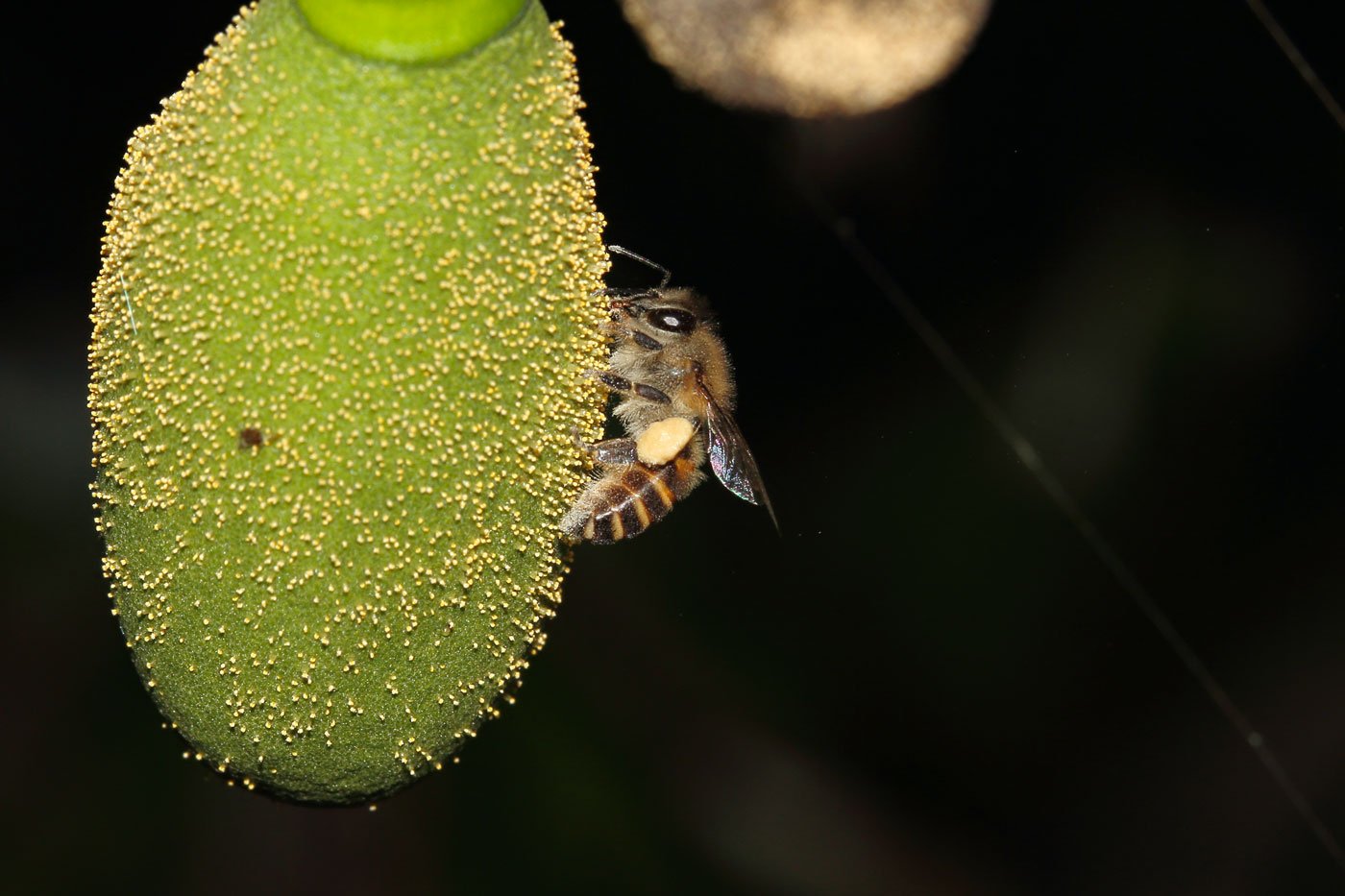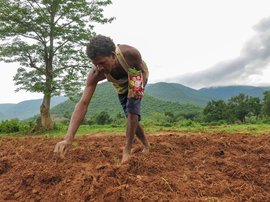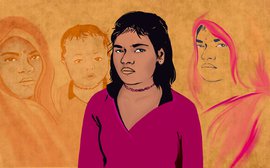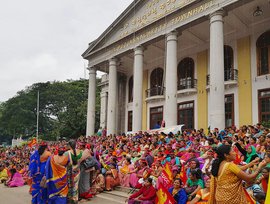It’s like a sequel to the 1998 hit film, A Bug’s Life . In the original Hollywood movie, Flik the ant is trying to recruit tough warriors to save thousands of his kin on Ant Island from the bad guys – marauding grasshoppers.
In the unfolding real-life sequel in India, the cast runs to trillions, of whom 1.3 billion are humans. The marauding short-horned grasshoppers – better known as locusts – arrived in May this year, each swarm running to millions. They devastated standing crops on close to a quarter of a million acres in Bihar, Gujarat, Madhya Pradesh, Rajasthan and, Uttar Pradesh, says the country’s Agriculture Commissioner.
These airborne aggressors render national borders irrelevant. Locusts exist across 30 countries and 16 million square kilometres from West Africa to India, according to the United Nations Food and Agriculture organisation (FAO). And a small locust swarm – 1 square kilometres with about 40 million members –can eat the same amount of food in a day as 35,000 people, 20 camels or six elephants.
Not surprising then that the national Locust Warning Organisation draws its members from defence, agriculture, home affairs, science and technology, civil aviation and communication ministries.
Locusts, however, are not the only villains in the emerging script as the delicate balance between millions of insects is thrown into jeopardy. In India, entomologists and Adivasi and other farmers are lining up the bad guys: multiple and sometimes alien species. Good guys – ‘beneficial pests’ friendly to food production – can also become bad guys when changing climate plays havoc with their habitat.
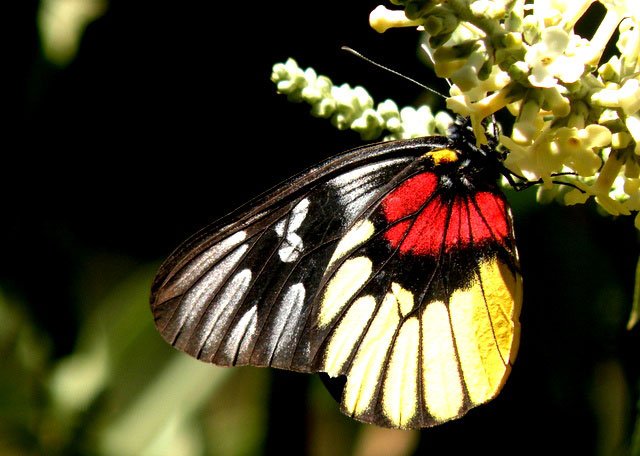
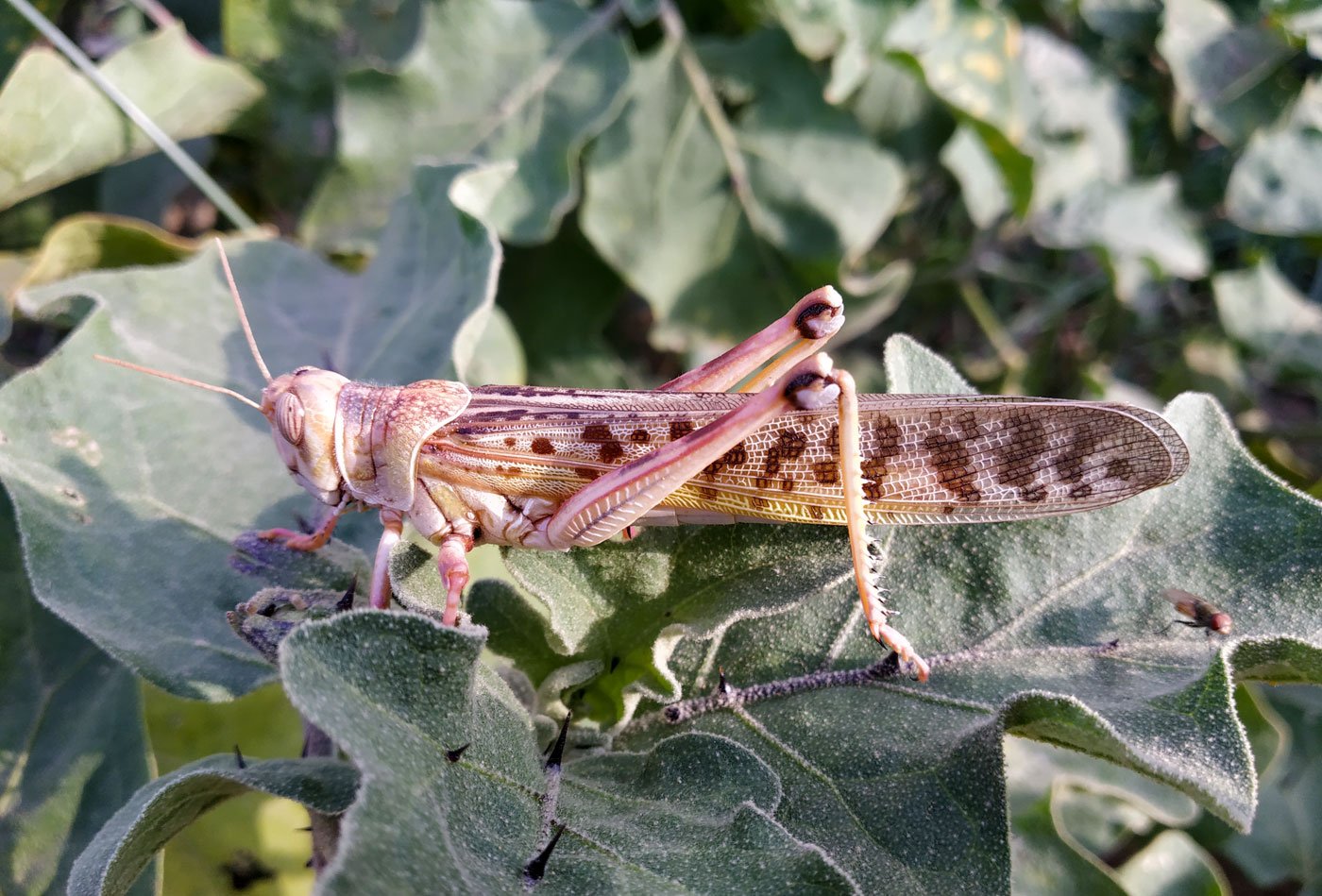
Even the gentle Red-Breasted Jezebel butterflies (left) are creating a flutter as they float from the eastern to the western Himalayas, staking new territorial claims and unseating 'good guy' native species, while the 'bad guys' like the Schistocerca gregaria locust (right) proliferate too. (Photos taken in Rajasthan, May 2020)
A dozen ant species have turned into dangerous pests, noisy cicadas are invading new areas, termites with razor sharp mouths are emerging from dark forests to devour healthy wood, and as bees decline in number and dragonflies appear off season, the food security of all living creatures erodes. Even the gentle Red-Breasted Jezebel butterflies are creating quite a flutter as they float in kaleidoscopic formations from the eastern to the western Himalayas, staking new territorial claims and unseating good guy native species. The battlegrounds and combatants range all across India.
Native insect decline is robbing the honey hunters of central India. “There was a time when we could see hundreds and hundreds of beehives on the cliff face. Today, they are difficult to find,” says Brij Kishan Bharti, 40, a Bharia Adivasi in Madhya Pradesh’s Chhindwara district.
He and other honey hunters in Shrijhot village – all from below poverty line families – climb nearby cliffs for honey, which they sell in the weekly markets of Tamia block headquarters, 20 kilometres away. They make two annual expeditions, one in each season (November-December and May-June) spending several days in the field.
The price of their honey has climbed in a decade from Rs. 60 to Rs. 400 a kilogram, but, says Brij Kishan’s 35-year-old brother Jai Kishan, “We each used to get 25-30 quintals of honey on these trips, now we are lucky to get 10 kilos. Trees in the jungle, like jamun, behera , mango and saal, have reduced. Less trees means less flowers and so less food for bees and other insects.” And less income for the honey hunters.
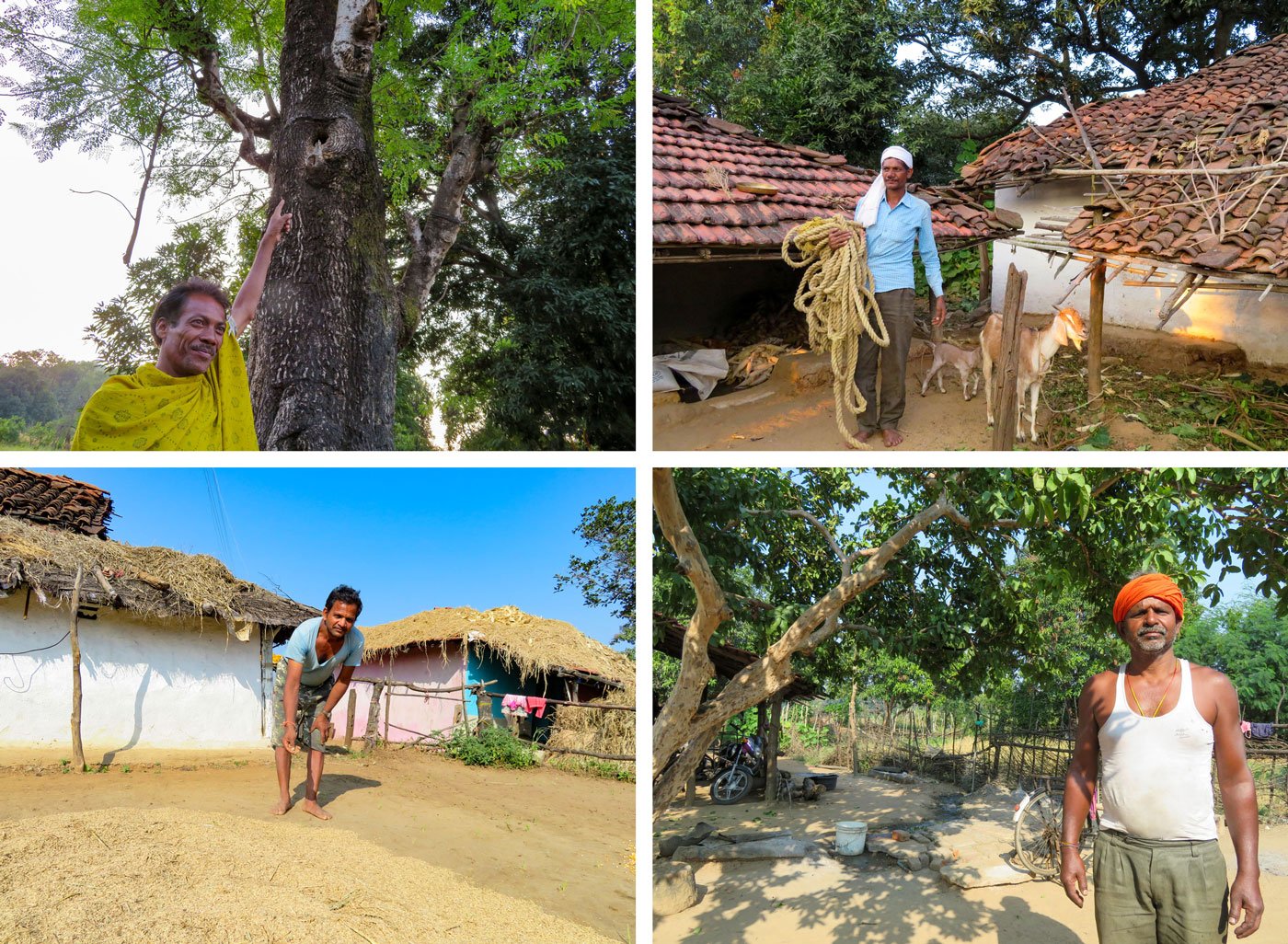
Top row: ' Today, bee hives are difficult to find', say honey-hunters Brij Kishan Bharti (left) and Jai Kishan Bharti (right). Bottom left: 'We are seeing new pests', says Lotan Rajbhopa. Bottom right: When bees are less, flowers and fruit will also be less', says Ranjit Singh
It's not just the decline in flowers that’s worrying. “We are seeing phenological asynchrony – where the emergence of insects and the emergence of flowers are out of sync,” says Dr. Jayashree Ratnam of the National Centre for Biological Sciences, Bengaluru. “For many plants,” says Dr. Ratnam, who is associate director of the NCBS’ wildlife biology and conservation programme, “the flowering dates have advanced with the earlier advent of spring in temperate zones, whereas pollinators have not always advanced their emergence to the same dates. This means the insects don’t get the food they need at the time they need it. These alterations can be matched to climate change.”
And, as Dr. Ratnam puts it, though they relate more directly to our food security, “Insects generally do not invoke the same affection as, say, furry mammals.”
*****
“There is less fruit not just on my guava tree, but on the amla and mahua trees, too. The achar (or chironji ) tree is not fruiting for many years now,” Ranjit Singh Marshkole, 52, tells us in Katiyadana hamlet in MP’s Hoshangabad district. Here, this Gond Adivasi farmer grows wheat and channa on his family’s nine acres near Matkuli village of Pipariya tehsil .
“When bees are less,” says Ranjit Singh, “flowers and fruit will also be less.”
Our food security rests in part on the wings and feet, pincers and antennae, of native insects like ants, bees, flies, wasps, hawk moths, butterflies, beetles and others who assist in pollination. As an FAO bulletin tells us, worldwide there are more than 20,000 species of wild bees alone, plus many other species – of birds, bats and other animals – that contribute to pollination. As much as 75 per cent of all food crops and 90 per cent of all wild plants depend on that pollination. And the annual value of crops affected by it globally is pegged at between $235 and $577 billion.
Our food security rests in part on the wings and feet, pincers and antennae, of native insects like ants, bees, flies, wasps, hawk moths, butterflies, beetles and others
Apart from their starring role in food crop pollination, insects also help maintain the health of forests as they break down wood and carcasses, turn the soil around and sequester seeds. In India, millions of Adivasis and others live in the 170,000 villages located next to forests where they procure fuel wood and non-timber forest produce that they can use or sell. Further, grazing of much of the country’s livestock population of 536 million depends on forests too.
“The jungle is dying,” Vijay Singh tells us, sitting under the shade of a tree while his buffaloes graze around him. This Gond farmer in his 70s has 30 acres of land here in Singanama village of Pipariya tehsil where he once grew channa and wheat. For some years, he’s let the land lie fallow. “The rain is either very heavy and runs off quickly, or it barely wets the earth.” And he’s observed the problems insects face. “There is no water, so where will the ants make their homes?”
In the Pachmarhi Cantonment area in Pipariya tehsil , Nandu Lal Dhurbe, 45, shows us a baami [local name for both ant and termite homes) of raised concentric circles. “ Baami need soft earth and cool moisture. But we don’t get continuous rain anymore and it is warmer, so you hardly see these.
“Nowadays flowers wither and die due to unseasonal cold or rain – too much or too little,” adds Dhurbe, who is a Gond Adivasi and a gardener with extensive knowledge of the ecology of his region. “So fruit trees give less fruit and insects have less food.”

Nandu Lal Dhurbe (left) says the ‘ baami ’ or ant home (centre, in MP's Junnardeo tehsil) is now rarely seen due to a warmer and drier climate.'The jungle is dying', says Vijay Singh of MP's Pipariya tehsil
Located in the Satpura range at a height of 1,100 metres, Pachmarhi is a Unesco biosphere reserve with national parks and tiger sanctuaries. This central India hill station draws round the year crowds seeking to escape the heat of the plains. Except, as Dhurbe and Vijay Singh observe, it’s warming up here as well – and their view has corroboration.
Data from an interactive portal on global warming of the New York Times shows that in 1960, Pipariya saw temperatures hit or cross 32 degrees Celsius 157 days in a year. Today, that figure is 201 hotter days a year.
The changes that both farmers and scientists note are leading to species loss and extinction. As one FAO report warns: “Present species extinction rates worldwide are 100 to 1,000 times higher than normal due to human impacts.”
*****
“I don’t have any ants to sell today,” Munnibai Kachlan, a Gond Adivasi, tells us at the Chhotedongar weekly haat in Chhattisgarh’s Narayanpur district. In her 50s, Munni has been collecting grass and ants from Bastar’s forests since she was a young girl. She is a widow with four daughters, and a subsistence farmer whose family mostly grows what they eat on two acres in Rohtad village, nine km away.
At the market, she tries to raise the 50-60 rupees she needs in cash for other essentials – by selling broom grass, ants and occasionally a few kilos of rice. The small amounts of ants she sells would fetch her 20 rupees at best, she says. But she had no ants to sell the day we met her, only a little bundle of grass.
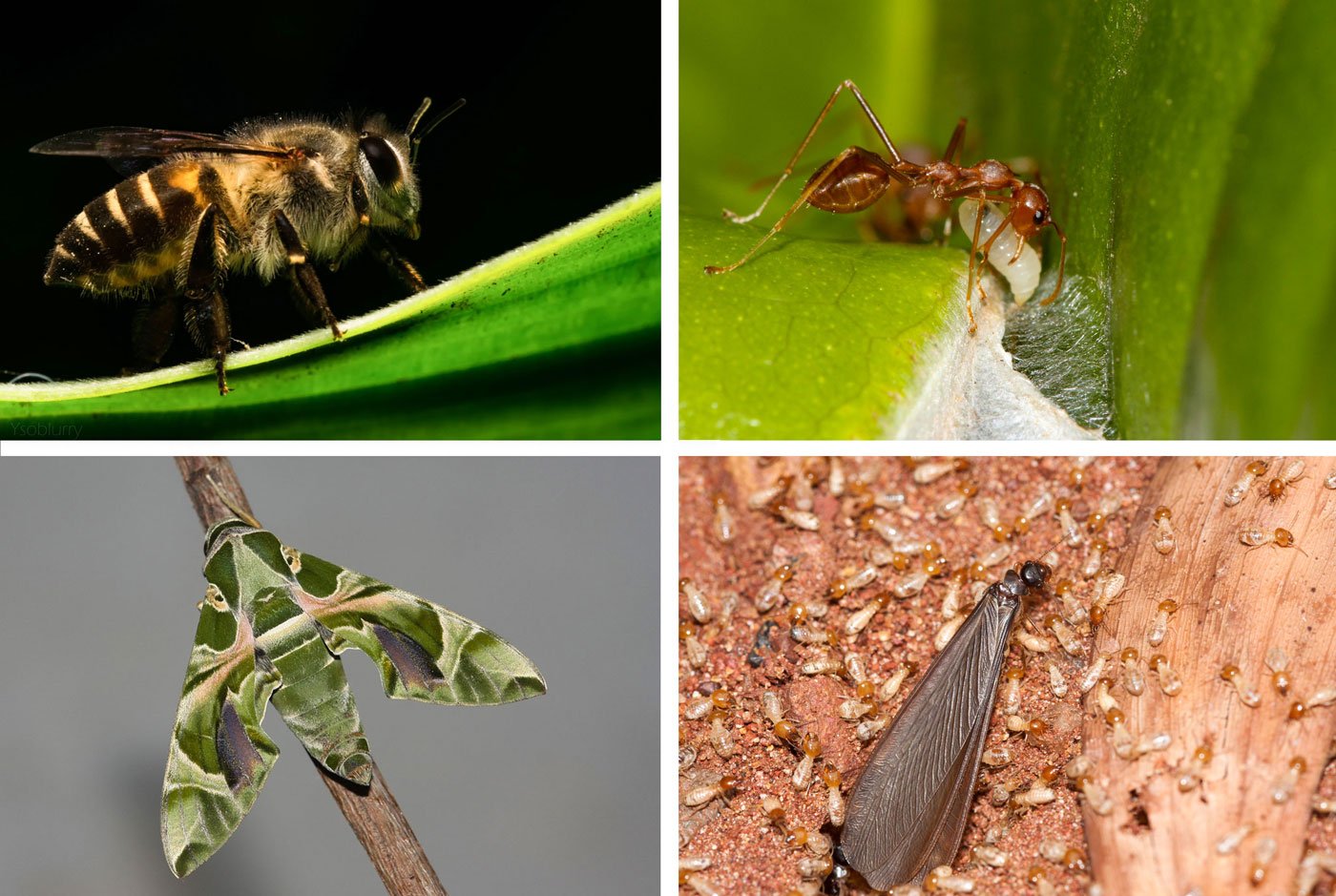
Top left: The apis cerana indica or the 'bee', resting on the oleander plant. Top right: Oecophylla smaragdina, the weaver ant, making a nest using silk produced by its young one. Bottom left: Daphnis nerii , the hawk moth, emerges at night and helps in pollination. Bottom right: Just before the rains, the winged form female termite emerges and leaves the colony to form a new colony. The small ones are the infertile soldiers who break down organic matter like dead trees. These termites are also food for some human communities who eat it for the high protein content
“We eat halaingi [red ants],” says Munni. “There was a time when we women could easily find them in the jungle. Now there are far fewer of them and you find them only on tall trees – making them difficult to collect. We are worried the men could injure themselves trying to reach the ants.”
India is staring at an insect apocalypse. “Insects are the keystone species. If they vanish, the system crashes,” says Dr. Sanjay Sane, associate professor at NCBS. He runs two hawk moth observation studies at wildlife field stations – one at Pachmarchi in Madhya Pradesh and the other in Agumbe, Karnataka. “Changes in vegetation, agricultural practices and temperatures are causing a decline in all species of insects. Entire populations are going extinct.”
“Insects can only tolerate a narrow range of temperatures,” says Zoological Survey of India (ZSI) director Dr. Kailas Chandra. “Even an increase of 0.5 degrees Celsius unbalances and alters their ecosystem forever.” In the last three decades, this entomologist has recorded a decline of 70 per cent in beetles which, along with butterflies and dragonflies, are marked as ‘threatened’ in the International Union for Conservation of Nature’s (IUCN’s) Red List . “The extensive use of pesticides which have leaked into our soil and water,” says Dr. Chandra, “has destroyed native insects, aquatic insects, unique species, and crushed our insect biodiversity.”
“The old pests have disappeared, but we are seeing new ones,” Lotan Rajbhopa, 35, an Adivasi farmer from the Mawasi community had told us in Ghatiya hamlet back in MP’s Tamia tehsil . “They come in such numbers they can destroy the whole crop. We have even given them a name – ‘ bhin bhini ’ [numerous],” he said wryly. “These new ones are evil, they multiply if you put pesticide."
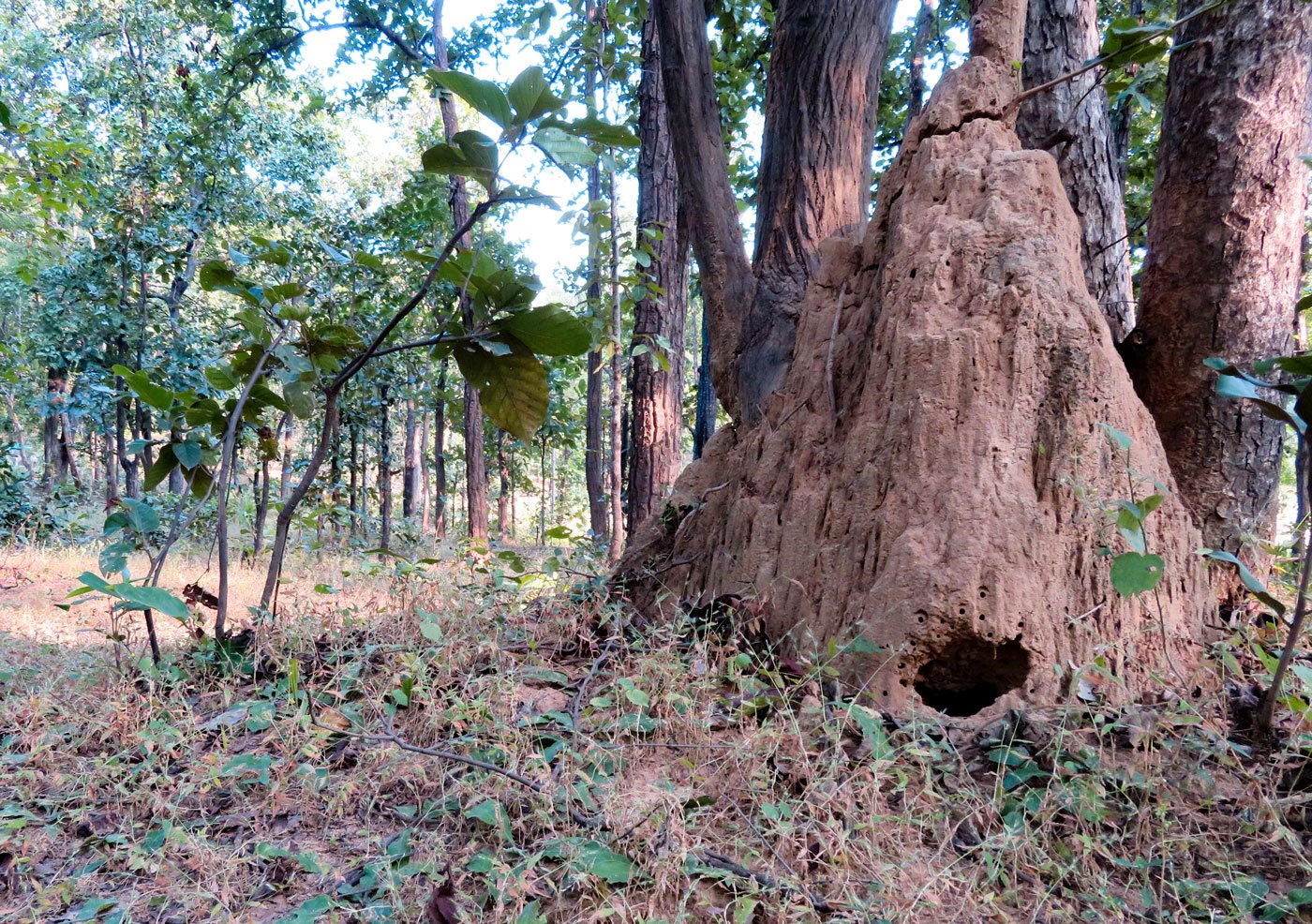
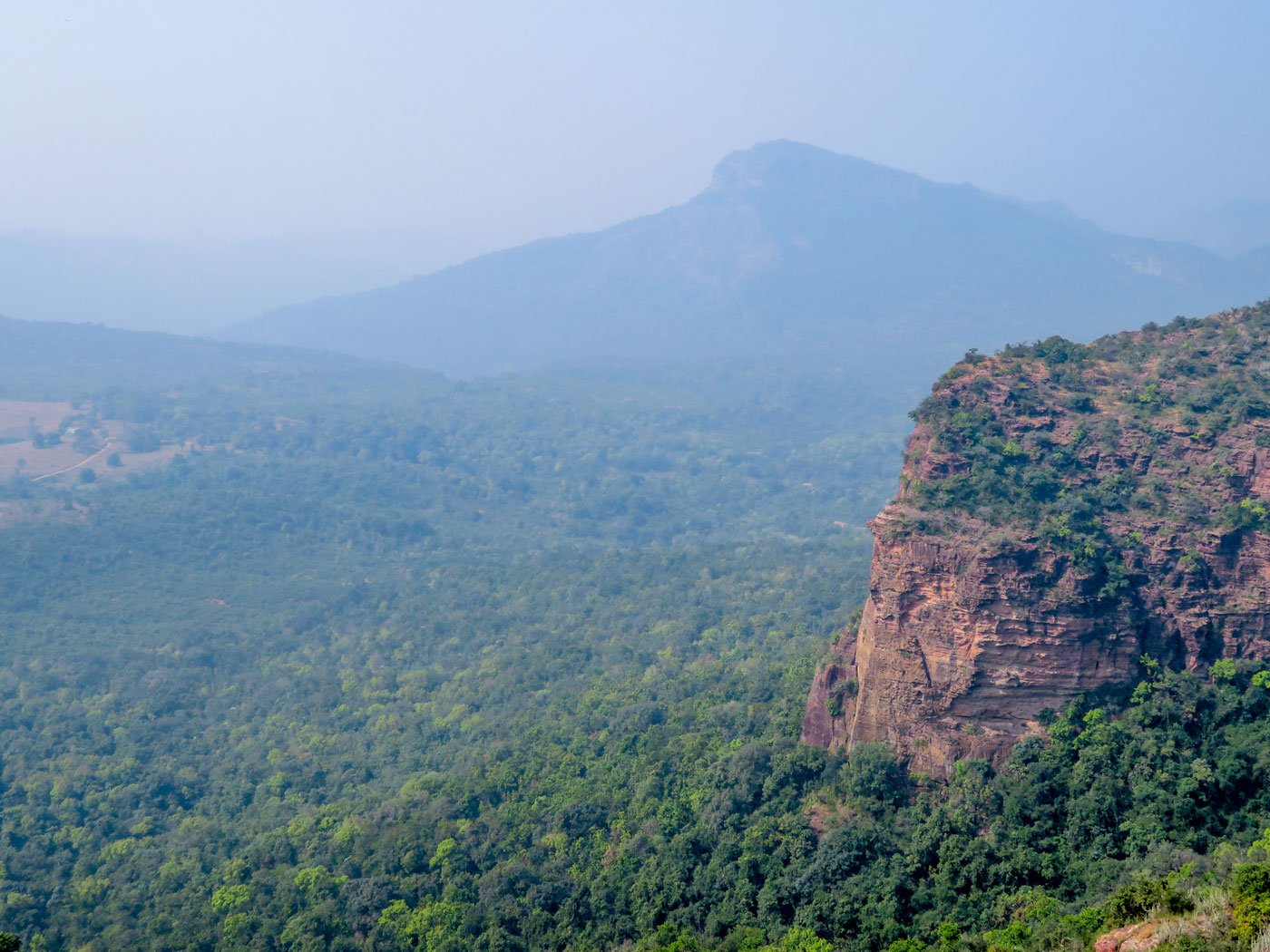
Ant hills in the Satpura tiger reserve of MP. 'Deforestation and fragmentation coupled with climate change are leading to disturbed habitats', says Dr. Himender Bharti, India’s ‘Ant Man’
At the Butterfly Research Centre in Bhimtal, Uttarakhand, founder Peter Smetacek, 55, has long held that global warming along the Himalayas was causing increased humidity and temperature in the western part of the range. So winters which used to be dry and cold are now warmer and wetter, enabling the colonisation of the west Himalaya butterflies by eastern Himalayan species (used to a warm and humid climate).
India is a major centre of biodiversity with 2.4 per cent of the earth’s land but 7 to 8 per cent of its species . As of December 2019, insect species in India numbered 65,466, says ZSI’s Dr. Chandra. However, “this is a conservative estimate. The likely figure is at least 4 to 5 times higher. But many species will become extinct before they can be recorded.”
*****
“Deforestation and fragmentation of habitats coupled with climate change are leading to disturbed habitats,” says Dr. Himender Bharti, evolutionary biologist at the Punjabi University, Patiala, who is famous as India’s ‘Ant Man’. “Ants react to stress on a much finer scale compared to other vertebrates and are widely used to assess landscape disturbance and species diversity.”
Dr. Bharti, who heads the department of zoology and environmental sciences at the university, is credited with compiling the first checklist of 828 valid ant species and subspecies in India. “Invasive species,” he warns, “are faster at adapting and are displacing native species. They will occupy and take over.”
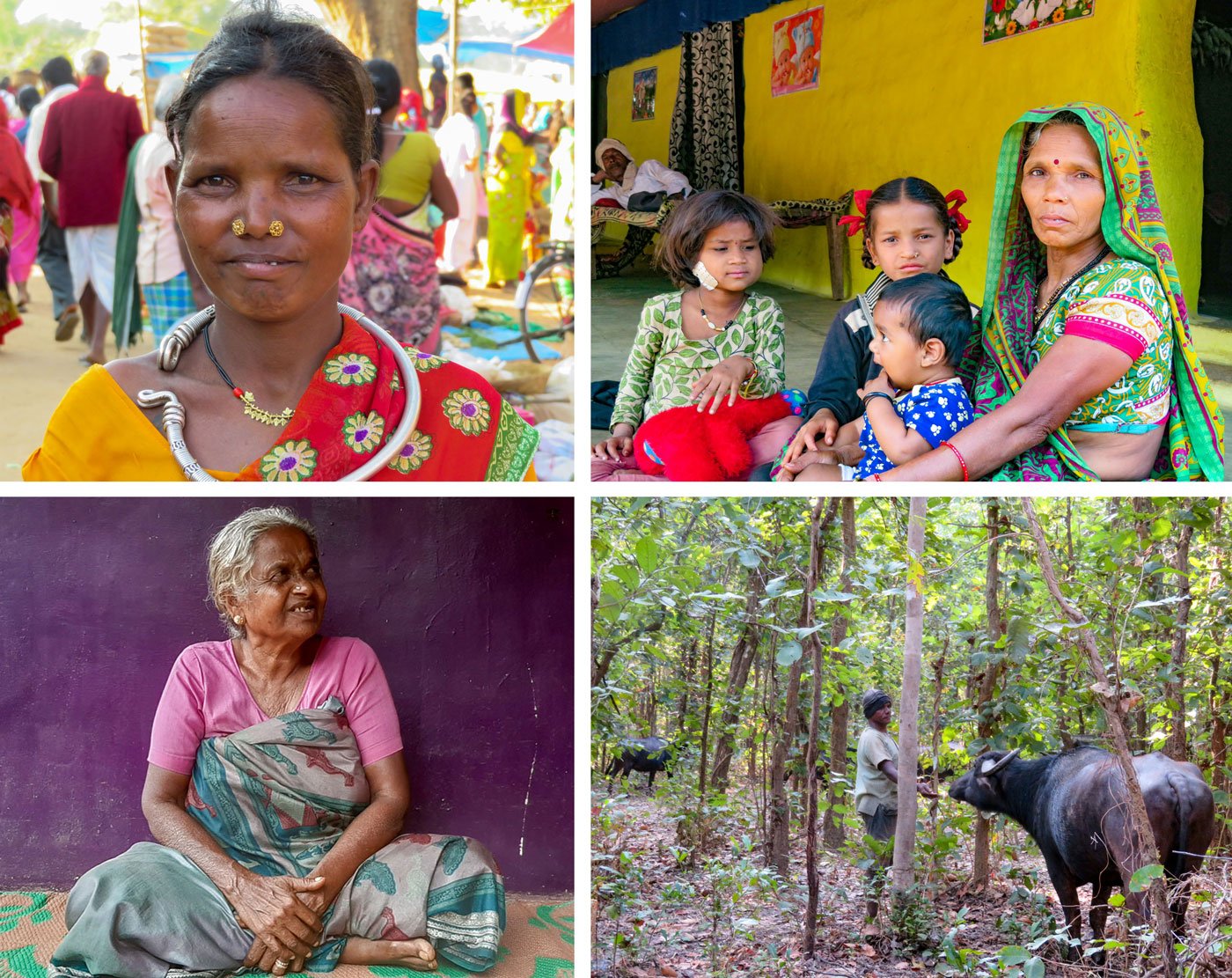
Top left: 'I don’t have any ants to sell today', says Munnibai Kachlan (top left) at the Chhotedongar weekly haat . Top right: 'Last year, these phundi keeda ate up most of my paddy crop', says Parvati Bai of Pagara village. Bottom left: Kanchi Koil in the Niligirs talks about the fireflies of her childhood. Bottom right: Vishal Ram Markham, a buffalo herder in Chhattisgarh, says; 'he land and the jungle now belong to man'
The bad guys do seem to be winning, feels Parvati Bai, a Mawasi tribal in her 50s. In her village of Pagara in Hoshangabad district, she says, “We now get these ‘ phundi keeda’ [very thin and fine pests]. Last year they ate up most of the paddy crop from my one-acre.” She estimates that loss at about 9,000 rupees in just that season.
A thousand kilometres away from Parvati Bai, in the Nilgiri mountain range of the south, botanist Dr. Anita Verghese observes: “Indigenous communities are the first to notice changes.” A deputy director of the Keystone Foundation in the Nilgiris, she points out that “Honey hunters in Kerala noticed that the apis cerana bees had switched to more tree cavity nests than ground ones and they attributed this to an increase in predatory bears and also rising soil temperatures. Communities with traditional knowledge and scientists must find a way to talk to each other.”
Also in the Niligiris, 62-year-old Kanchi Koil, who is from the Kattunayakan Adivasi community, is happy to talk about the fireflies ( coleoptera ) which lit up the nights of her childhood. “The minmini poochi (fireflies) look like a chariot on a tree. When I was young, they would come in large crowds and the trees would look so beautiful. They are not seen much anymore.”
Back in Chhattisgarh’s Jabarra forest in Dhamtari district, Gond farmer Vishal Ram Markam, now in his 50s rues the death of the forests: “The land and the jungle now belong to man. We light fires, we sprinkle DAP [diammonium phosphate] in the fields and in the water. I lose 7 to 10 big animals from my livestock every year to poisoned water. Fish and birds cannot live, how will small insects survive?”
Cover photo: Yeshwanth H. M.
The reporter would like to thank Mohammed Arif Khan, Rajendra Kumar Mahaveer, Anup Prakash, Dr. Savita Chib and Bharat Merugu for their invaluable help and support in reporting this story. Thanks also to forensic entomologist Dr. Meenakshi Bharthi for generously sharing her insights.
PARI’s nationwide reporting project on climate change is part of a UNDP-supported initiative to capture that phenomenon through the voices and lived experience of ordinary people.
Want to republish this article? Please write to [email protected] with a cc to [email protected]
